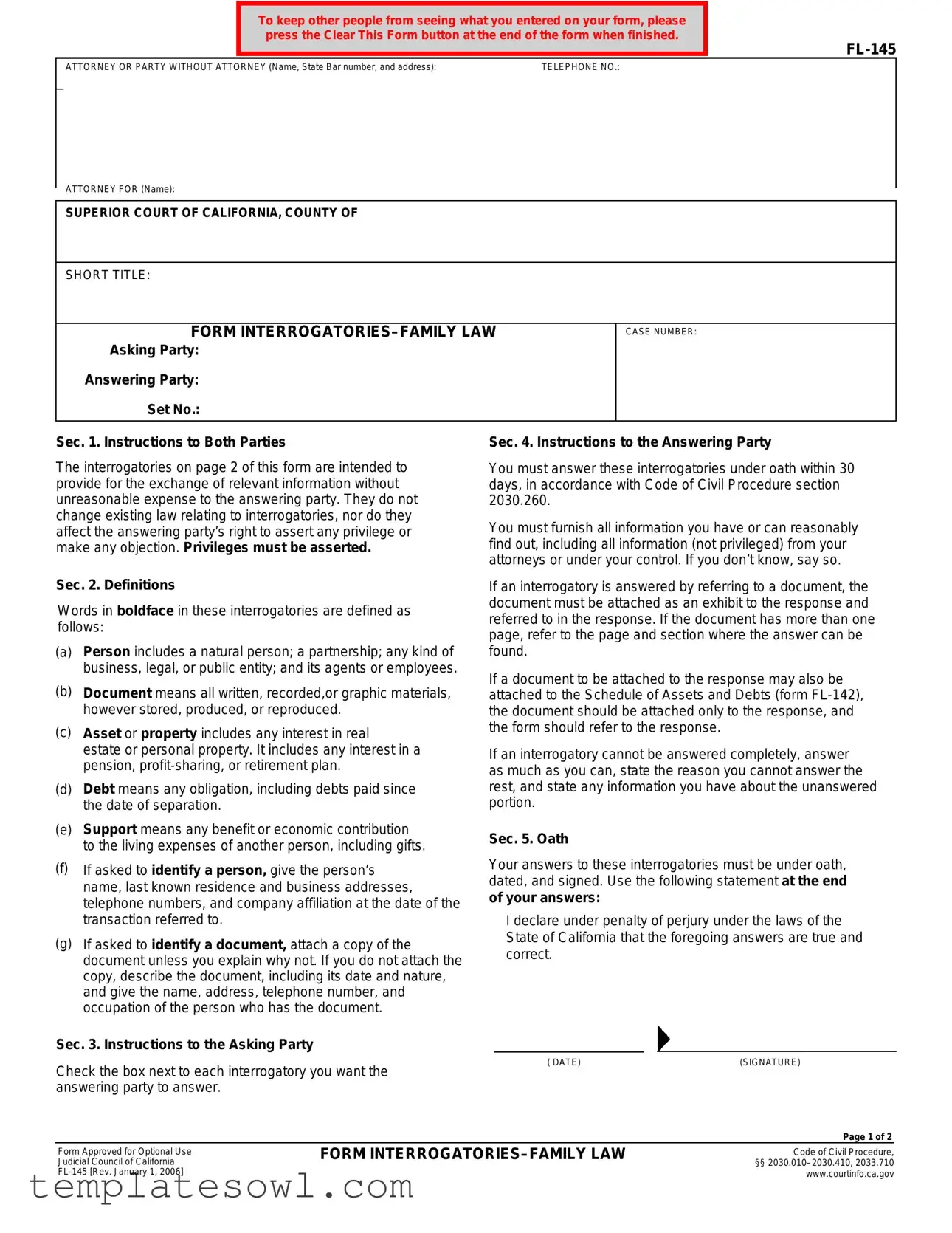What is the California FL 145 form?
The California FL 145 form is used in family law cases for exchanging information between parties. It includes a series of questions meant to gather relevant details regarding personal history, financial assets, debts, and support. The form aims to streamline the discovery process while ensuring parties have the necessary information to proceed with their cases.
Who needs to fill out the FL 145 form?
Both parties involved in a family law matter, such as divorce or child custody, are required to fill out the FL 145 form. It is essential for individuals seeking information from their spouse or domestic partner regarding financial and personal circumstances pertinent to the case.
What information is required on the FL 145 form?
The form asks for various types of information, including personal details, income sources, assets and debts, support provided or received, and any legal agreements made prior to or during the marriage. It also covers questions about children's needs and attorney fees incurred during the proceedings.
How long do I have to respond to the FL 145 form?
Responses to the FL 145 form must be completed under oath within 30 days of service. This timeframe is in accordance with Code of Civil Procedure section 2030.260. It is crucial to adhere to this timeline to ensure compliance with legal requirements.
What happens if I cannot answer a question on the FL 145 form?
If you cannot fully answer a question on the FL 145 form, you should provide as much information as possible. Clearly indicate the reasons for your incomplete answer and disclose any details you may have that relate to the unanswered portion. This approach demonstrates your good faith in complying with the request.
What should I do if I need to attach documents?
When requested to provide documentation, you must attach a copy of those documents to your responses. If the document has multiple pages, make sure to refer to the specific page and section in your answer. It is essential to clarify any documents that may also be included in other forms, such as the Schedule of Assets and Debts (FL-142).
Can I object to any of the questions on the FL 145 form?
Yes, you can assert any objections, including claims of privilege, regarding specific questions. If you decline to answer based on an objection, it is vital to clearly state your reasoning as this will allow the asking party to understand the basis of your refusal.
Is it necessary to have an attorney when filling out the FL 145 form?
While it’s not mandatory to have an attorney, consulting with one is advisable. An attorney can guide you through the process, ensure that you fulfill your obligations, and help you understand your rights, especially if complex issues arise.
What declarations must I include when submitting the FL 145 form?
At the end of your responses, you must include a declaration stating that your answers are true and correct under penalty of perjury. This declaration adds a level of seriousness to the information provided and verifies your commitment to the accuracy of your answers.
What should I do after completing the FL 145 form?
After you have completed the form, it is essential to carefully review all provided information for accuracy. Once satisfied, you should sign, date the form, and serve it to the other party involved. Don't forget to press the "Clear This Form" button for your privacy after finishing.


